Continuing CNE’s ‘Snake Long Weekend’, here are some examples of the many kinds non-lethal serpents found in the Kingdom of Cambodia.
As rainy season gets underway, snakes are forced out of hiding spots and may be encountered more often. Try not to kill them, if you can help it, they do good work in pest control.
The dangerous snakes of the kingdom can be seen here: https://cne.wtf/2019/05/11/cambodias-deadliest-snakes/
The Burmese Python (Python bivittatus)
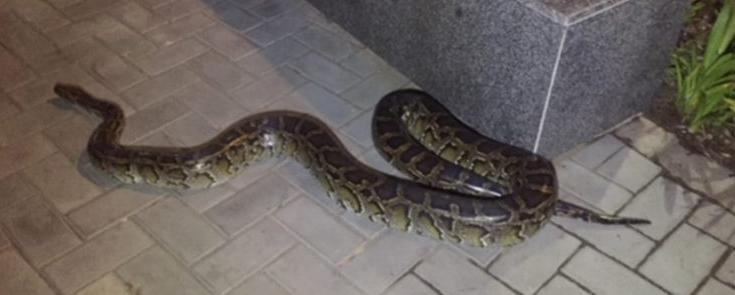
One of the largest species of snakes in the world, Burmese pythons can grow up to 5 m in length, are relatively common and are often in the news for turning up in urban and semi-urban environments.
Although normally considered docile, these pythons can give a nasty bite. They live and hunt around water, but can also climb trees.
Luckily they are revered in Cambodian culture and not generally eaten or killed.
The reticulated python (Python reticulatus)
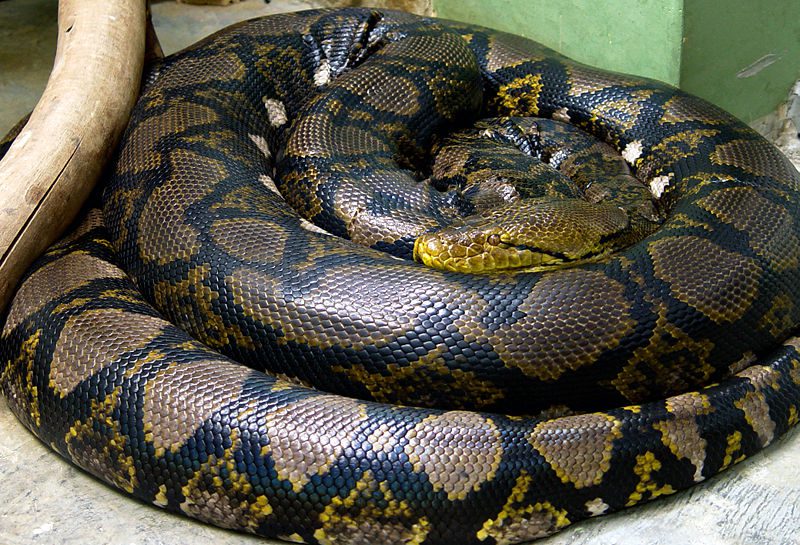
Like above, but bigger, these beasts can grow to over 6 metres long. Can be distinguished from the Burmese species by the distinctive pattern shown in the picture.
Although rare, there are several recorded cases of humans being crushed by this heavyweight constrictor, even even some reports of people being eaten.
Chrysopelea ornata or Golden Flying Tree Snake

One for all the herpetophobes, this mildly venomous snake grows up to around a metre in length and can jump and glide between trees, where they spend most of their time eating small birds and reptiles.
Active in the daytime, and commonly seen in coconut and banana, they are very quick and rarely bite unless captured.
Ahaetulla prasina or Asian Vine Snake
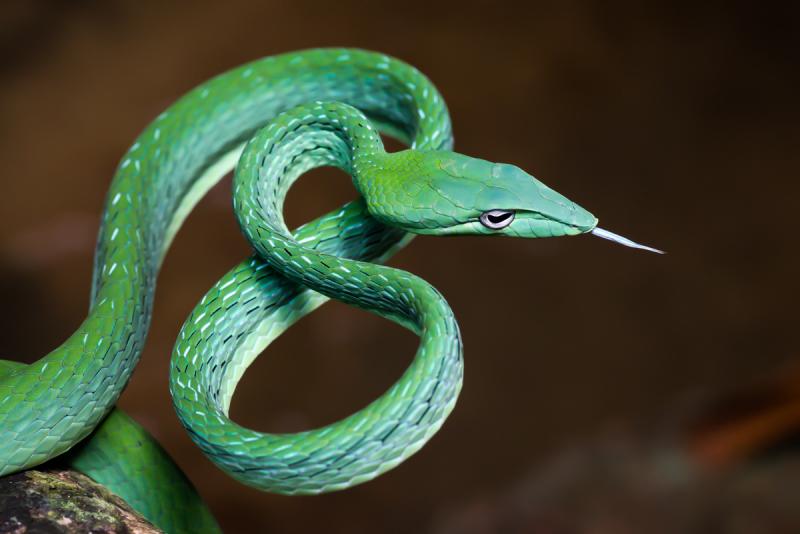
A slender species of tree snake that can grow up to 2 metres. They range in colour from dull brown to bright green and eat small vertebrates. They are mildly venomous, but bites are not life threatening.
These snakes are popular in the pet trade. and interestingly are viviparous, meaning they give birth to live young instead of laying eggs.
Ahaetulla nasuta or Green Vine Snake/Long Nosed Whip Snake
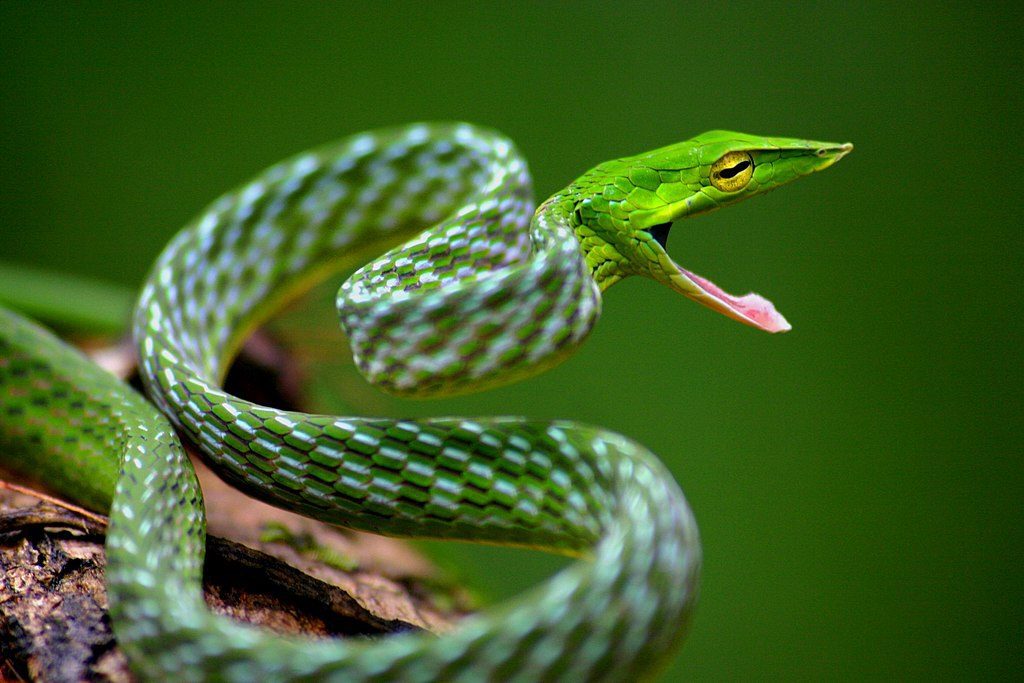
Similar to the Asian Vine Snake, this is another tree dweller with venomthat is moderately potent and can cause swelling, pain, bruising, numbness and other local symptoms, which will subside within three days. Bites close to the head, eyes and other vital areas could be severe.
Said to cause blindness and will often target the eyes if threatened.
Boiga multomaculata, also called the many-spotted cat snake, large-spotted cat snake and marbled cat-eyed snake
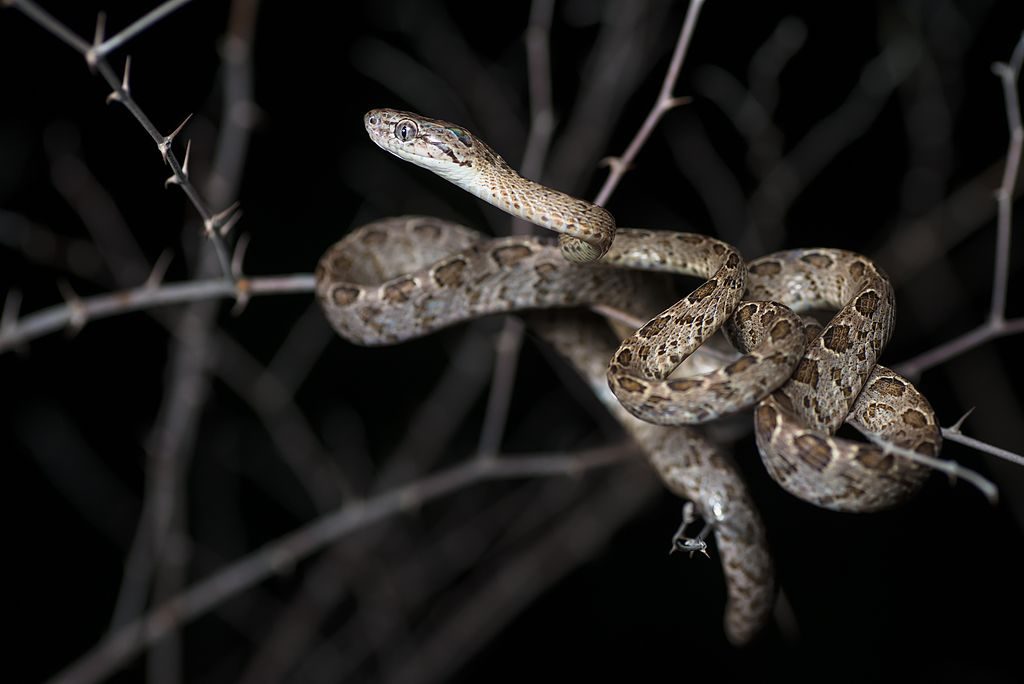
Has cool names (although it doesn’t eat cats, but geckos and other small lizards). This snake only grows to less than 80 cm and is active in both day and night, but seems to prefer dawn for hunting. These snakes like to hang out on trees over water, and although mildly venomous, their bite poses no real danger to humans.
Boiga dendrophila, commonly called the mangrove snake or the gold-ringed cat snake
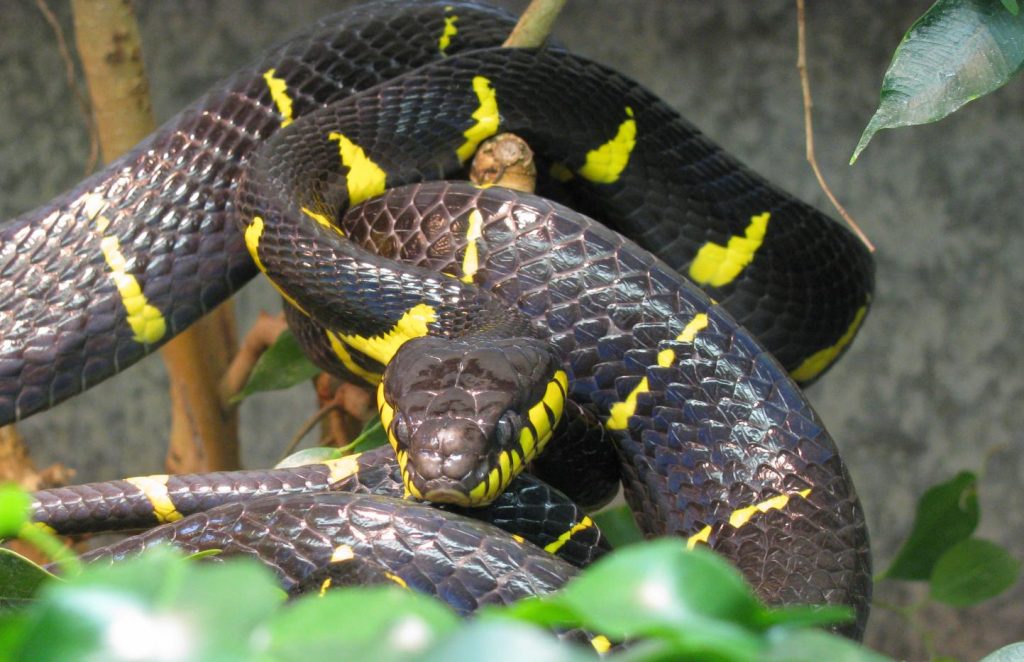
An aggressive snake that grows over 2 metres long. Found mostly in lowland forest areas, they are mildly venomous, but other than painful swelling around the bite area, pose little danger to humans.
Boiga cyanea or Green Cat Snake
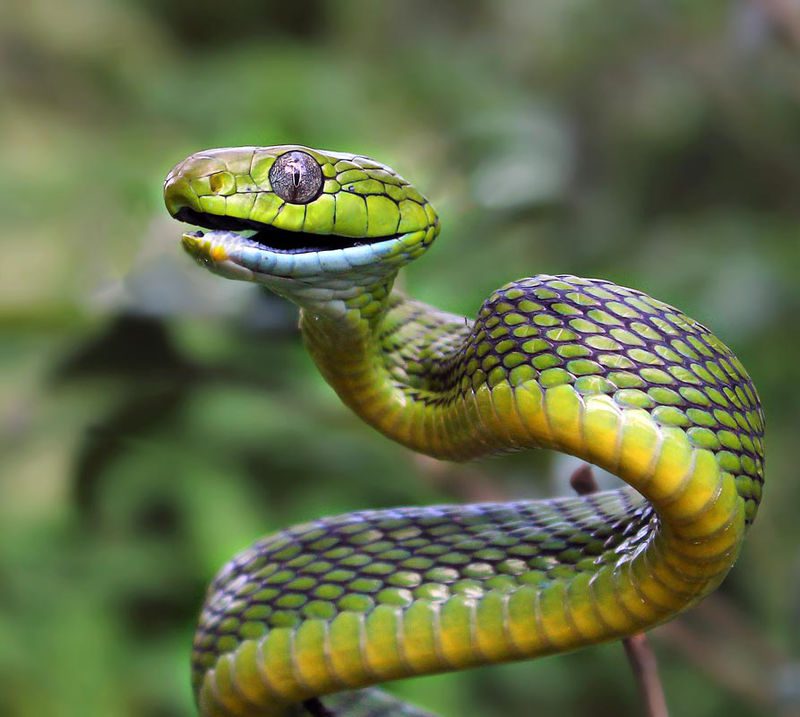
A snake that you will very rarely see, as they spend almost all their time in trees where they prey on small birds and eggs.
Mostly active at night, this species is mildly venomous, but will rarely bite and is said to be handled easily, not that it’s recommended.
Oligodon or kukri snakes.
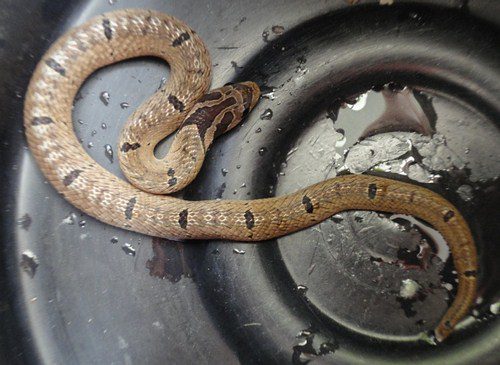
The kukri snake comes in a few sub-species found in Cambodia (pictured is a Brown Kukri). Generally under a metre in length and found in a range of habitats. These snakes are non-venomous, but are known to be aggressive and deliver a painful bite.
One of the few snake species to have fangs, but no venom.
Coelognathus radiatus or Radiated Ratsnake
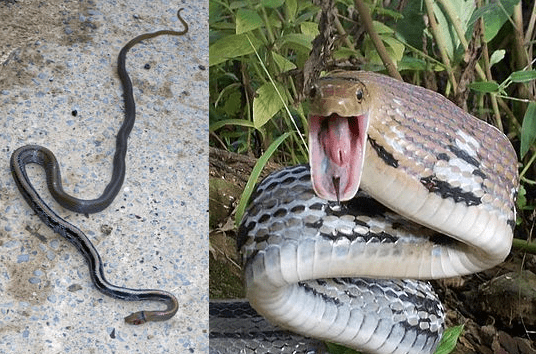
A common snake which grows between 1-2 metres. Although non-venomous, they are known to be very defensive. As the name suggests, prey on rodents and small birds, so often live in close proximity to humans.
Cylindrophis ruffus or Red Tailed Pipe Snake
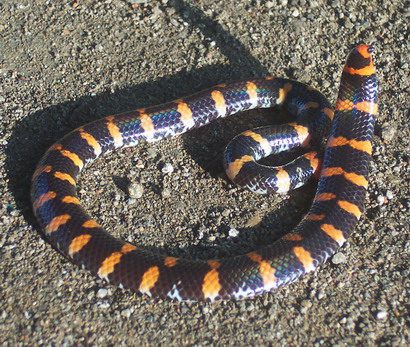
A small snake that grows under a metre. They are burrowers with small heads and eyes which give the appearance of a worm.
They spend most of the time on or underground feeding on lavae and will often be flushed out by heavy rains. Totally harmless.
Xenopeltis unicolor or Sunbeam Snake
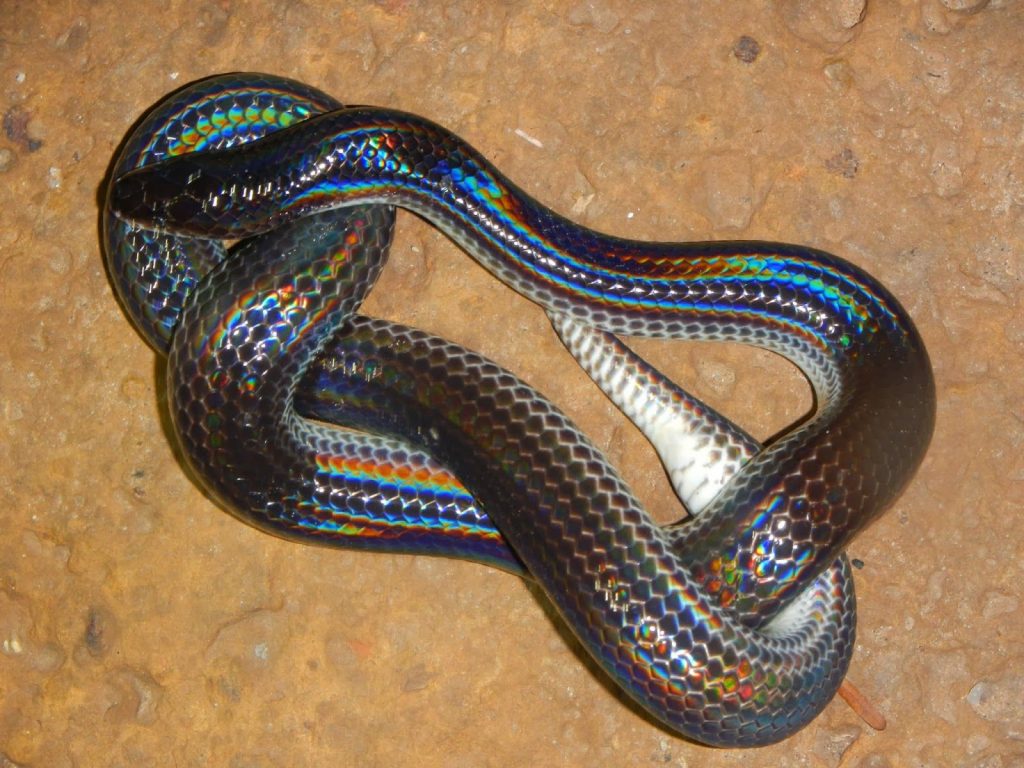
A common constrictor found in gardens, parks and rice fields. Grow to around 1 metre and eat frogs, rodents and small birds at night.
The sunbeam has beautiful rainbow colours which sparkle under light. Totally harmless.

Thanks for this. My neighbour just got a bite from a gold ringed cat snake. Used your article to id it. He’ll live, but as it says he has a very sore and swollen foot!